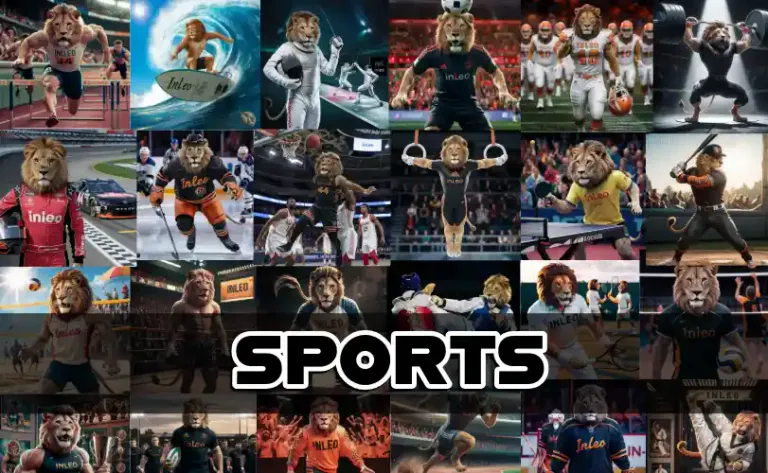Welcome to the daily sports #threadcast! Here we will discuss, follow and share all the news from the sporting world.
We want to make #inleo the premier destination for the #sports community by establishing the Leo platform as the hub for sports updates
Edition #156
December 13

Canal Rica Perrone
#sports
!summarize
!summarize
!summarize
!summarize
!summarize
!summarize
!summarize
!summarize
!summarize
!summarize
!summarize
!summarize
!summarize #nyyankees #devinwilliams #brewers #milwaukee #mlb
!summarize #kyletucker #chicago #cubs #houston #astros
!summarize #nyyankees #devinwilliams #brewers #milwaukee
!summarize #kyletucker #chicago #cubs #houston #astros
!summarize #kyletucker #chicago #cub #houston #astros
!summarize #Jimthorpe #baseball #athlete
!summarize #nymets #houston #astros #kyletucker #chicago #cubs
!summarize #caitlinclark #wnba #sports
Astros Deal Kyle Tucker to Cubs
The Chicago Cubs are finalizing a trade to acquire outfielder Kyle Tucker from the Houston Astros, according to Chandler Rome of The Athletic.
In return, the Astros will receive infielder Isaac Paredes, right-handed pitcher Hayden Wesneski and third base prospect Cam Smith.
#cubs #mlb #astros #kyletucker #trade #chicago #houston
Rumors began to swirl around the possible trade of Tucker during the Winter Meetings earlier this week. The New York Yankees were reportedly amongst the final contenders for Tucker’s services. The 27-year-old right fielder has made the All-Star team the last three seasons and is entering his walk year.
Per the New York Post’s Jon Heyman, Tucker is not expected to agree to an extension with Chicago. After seeing Juan Soto receive $765 million from the Mets over 15 years, he will likely test his luck on the open market next offseason in hopes of garnering his own mega deal.
Paredes will have a new home for the second time this year. The corner infielder, who was also an All-Star this past season, was traded to the Cubs from the Tampa Bay Rays in a deadline deal in July. Paredes could serve as a possible replacement for Alex Bregman.
Wesneski made 28 appearances for the Cubs in 2024, including seven starts. The swingman pitched to a 3.86 ERA in his third year with the club.
Smith was the Cubs’ seventh-rated prospect heading into the day, according to MLB Pipeline. The 21-year-old reached as high as AA in 2024 after being drafted No. 14 overall in the 2024 MLB First-Year Player Draft out of Florida State.
!summarize #lalakers #nba #lebronjames
!summarize #snoopdogg #bronnyjames #lalakers #nba
!summarize #lebronjames #nba #lalakers
!summarize #lebronjames #lalakers #nba
!summarize #ufc #jonjones #tomaspinall #sport
!summarize #nyyankees #trade #mlb
!summarize #nymets #prospects #minorleagues
!summarize #devondrecampbell #nfl #49ers
!summarize #billbelichick #unc #college #football #nygiants #nfl
!summarize #wnba #mystics #caitlinclark
!summarize #briancashman #trade #nyyankees #devinwilliams
!summarize #nyknicks #timberwolves #minnesota #nba #karlanthonytowns
!summarize #nba #robparker #lebronjames #lalakers
!summarize #nymets #mlb #starlingmarte #juansoto
Starling Marte ‘willing to do whatever it takes’ with Juan Soto on Mets roster
Soto mentioned having talked to Marte in the past and having talked with him throughout the season.
Juan Soto might not have talked to any of his former teammates on the Yankees about free agency, but there is a member of the Mets he mentioned Thursday during his introductory press conference: Right fielder Starling Marte, the player whose place he’s taking in right field.
#nymets #starlingmarte #juansoto #mlb #trade
Soto mentioned having talked to Marte in the past and having talked with him throughout the season. This isn’t necessarily surprising, considering the two both come from the Dominican Republic and played for the National League team at the 2022 MLB All-Star Game. Marte even welcomed Soto to the Mets with an Instagram story earlier this week.
Having an established friendship could be beneficial since the outfield is a little crowded right now.
“His role is obviously going to change because we’ve got Juan Soto, who is going to play in right,” manager Carlos Mendoza said Thursday at Citi Field. “I had that conversation with Marte not too long ago after the news broke. He’s willing to do whatever it takes. He’s all about winning, and he’s at a point in his career that he wants to win a championship.”
The 36-year-old Marte has one year left on his four-year contract, Brandon Nimmo has left field locked down and Jose Siri and Tyrone Taylor are expected to share time in center field. Without Soto, that’s a pretty solid defensive outfield. While Marte’s metrics haven’t been what they used to be over the last two years, he’s still got a strong arm and good instincts in right field.
!summarize #brockpurdy #devondrecampbell #nfl #49ers
!summarize #nyyankees #devinwilliams #brewers #mlb
!summarize #kyletucker #devinwilliams #nyyankees #brewers #astros #mlb
!summarize #nygiants #baltimore #ravens #tommycutlets #nfl
!summarize #colbycovington #lebronjames #nba #lalakers #diddy
!summarize #codybellinger #nyyankees #chicago #cubs #trade #mlb
https://www.youtube.com/?v=40Je_0Jef_o
!summarize #dominican #mlb #baseball #players
!summarize #nba #media #ratings
!summarize #cricket #baseball #sport
!summarize #wiltchamberlain #nba #athlete
!summarize #odellbeckhamjr #miami #dolphins #nfl
!summarize #briancashman #devinwilliams #nyyankees #mlb
!summarize #juansoto #nymets #mlb
!summarize #nygiants #nfl #baltimore #ravens
!summarize #bodybuilders #death
!summarize #miracleonice #1980 #usahockey #gold #olympics
!summarize
!summarize
!summarize
!summarize
!summarize